- GR Sport adds styling spunk to funky C-HR
- Sports upgrades don't remove comfort
- Still very efficient
- Not quick at all, despite GR Sport badge
- Claustrophobic rear seat
- Europe-spec 2.0L hybrid isn't sold here
The C-HR is Toyota’s small SUV that offers a little more style than the rest of the range. Quite a lot of manufacturers are tapping into the style over substance mindset with varying degrees of success. Mitsubishi have the Eclipse Cross, Nissan have the Juke and Hyundai have the Kona. So is it worth going for style over practicality, or can you have your cake and eat it too? We test the 2021 Toyota C-HR GR Sport to find out.
New for the 2020 model year, the GR Sport variant of the C-HR gives the already funky looking standard car a little more sportiness. The now third GR model in the Toyota GR range (after the GR Supra and GR Yaris), the C-HR GR Sport is based off the base model C-HR GXL but with the hybrid system from the Koba Hybrid.
Price & Specs: 8.5/10
Standard equipment on the C-HR GR Sport is new GR-Sport specific 19-inch alloy wheels, an 8.0-inch touchscreen with wired Apple CarPlay and Android Auto, satellite navigation with live traffic updates, a six speaker stereo, dual-zone climate control, leather and suede upholstery, keyless entry and push button start, heated and auto-folding mirrors, automatic exterior LED lighting, rain-sensing wipers and a leather wrapped steering wheel and gear knob.
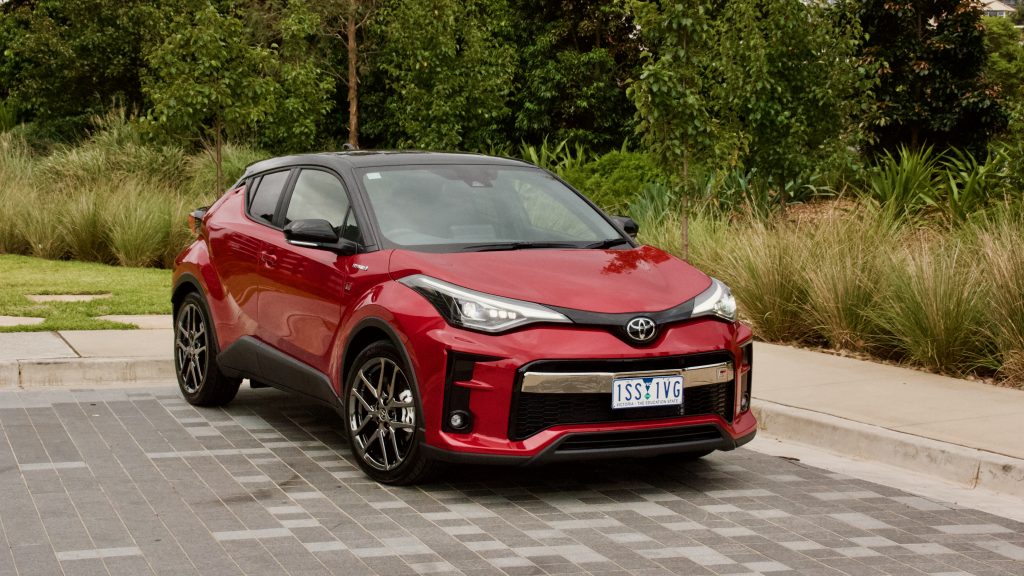
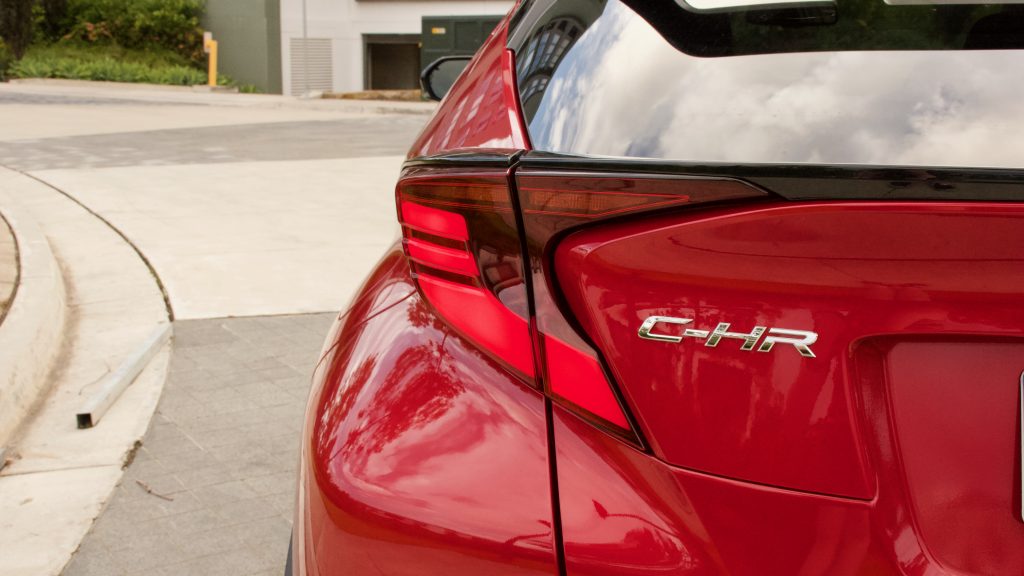
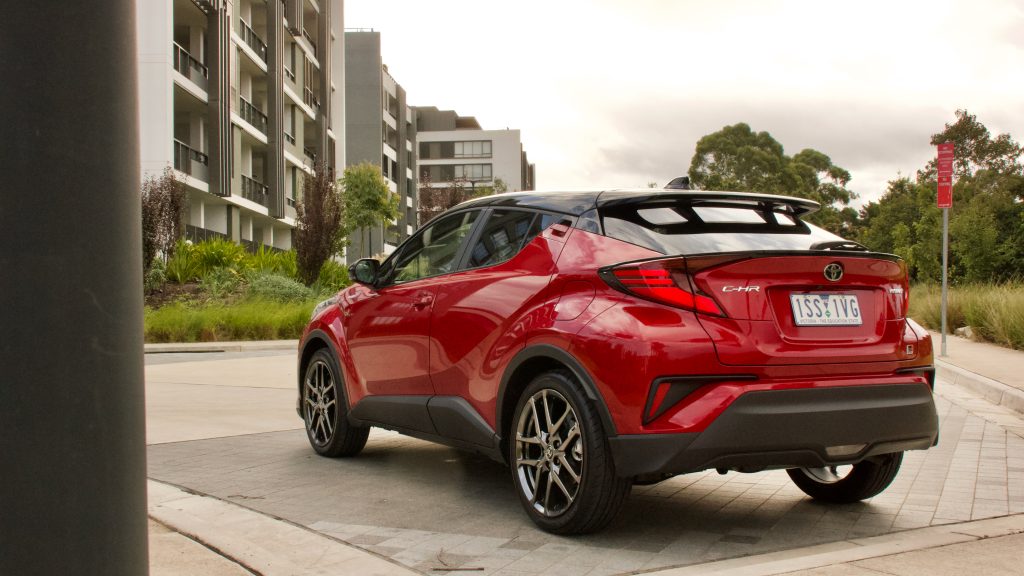
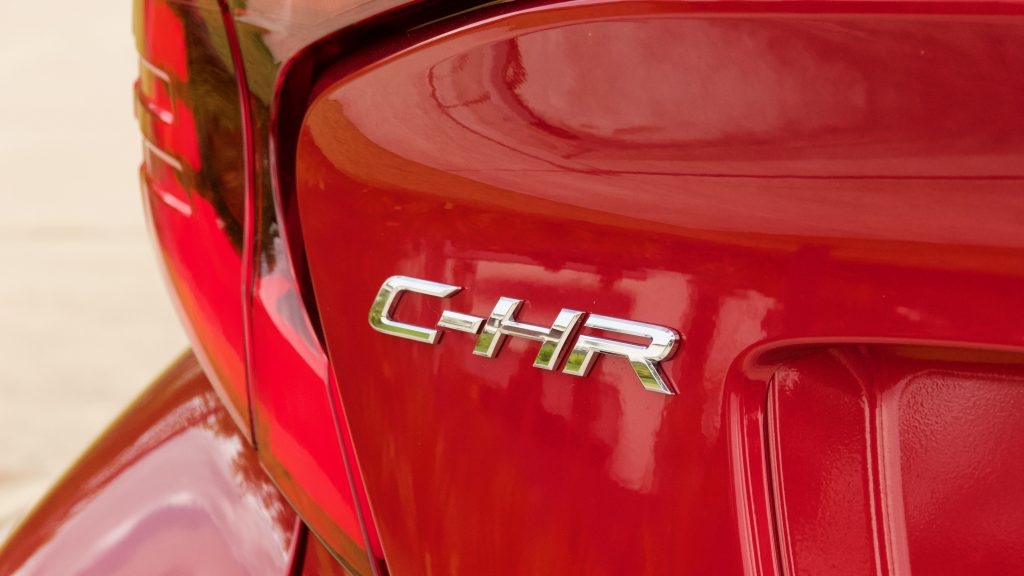
The GR Sport model C-HR exclusively gains GR specific 19-inch Alloy wheels, a new front bar, side skirts, a new rear bumper, larger brakes with white brake callipers and GR Sport badging over the GXL.
Being a Toyota, the C-HR GR Sport comes loaded with safety tech. It comes with high and low speed autonomous emergency braking (AEB) with pedestrian detection, lane departure warning, lane keep assist, front and rear parking sensors with a rear view camera, forward collision warning, blind-spot monitoring with rear cross-traffic alert, auto high beam, seven airbags and a five-star ANCAP safety rating.
The 2021 Toyota C-HR GR Sport is very well equipped but it does miss out on an electric drivers seat, which we feel would tie the cabin together well – Euro-spec models come with this and heated seats. Competitors to the C-HR GR Sport include the Nissan Juke Ti ($36,490 plus on roads – $1,175 less than the C-HR) and the Kia Seltos Sport+ with the 1.6-litre turbocharged engine and all-wheel drive, which costs $37,490 drive away.
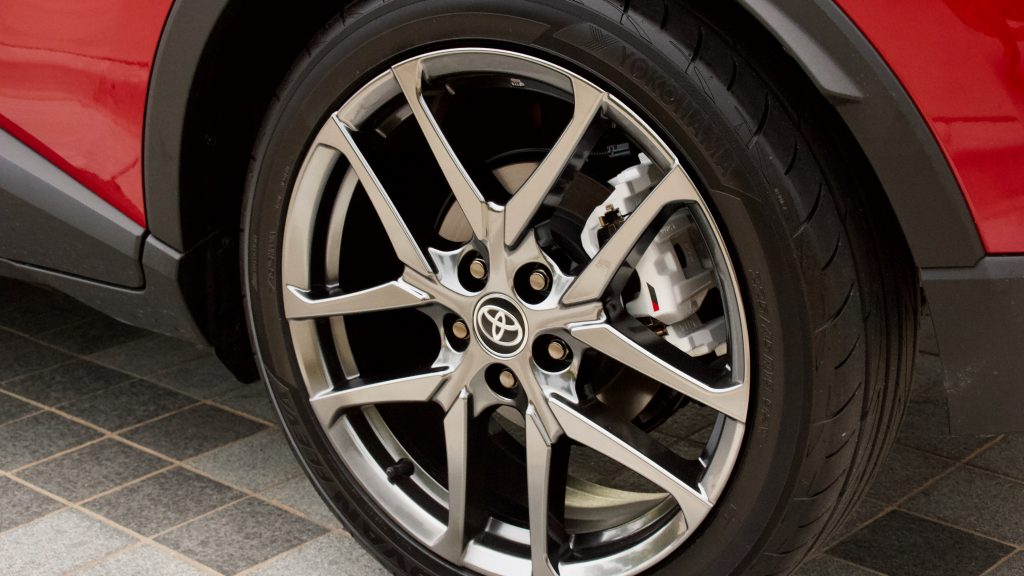
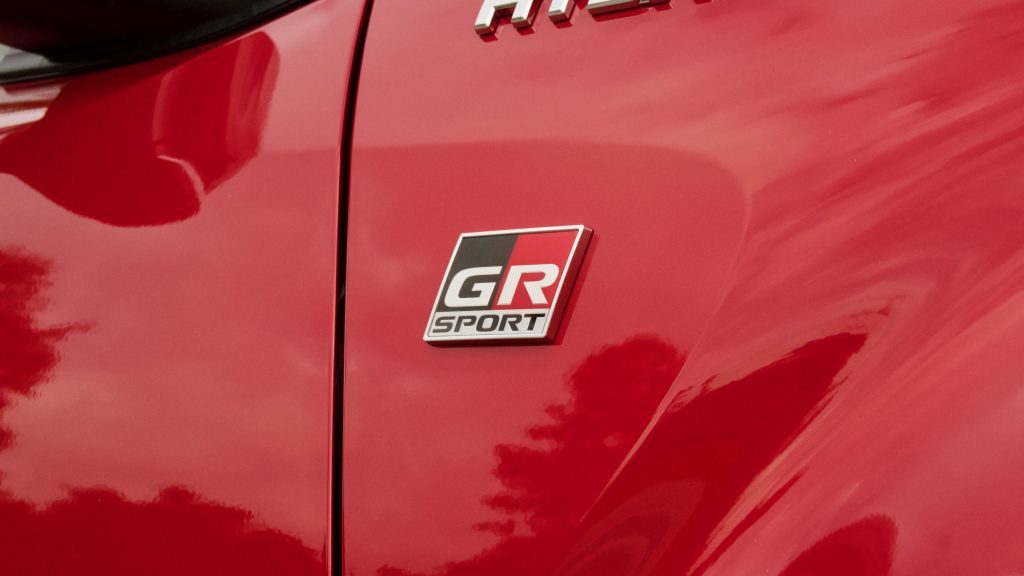
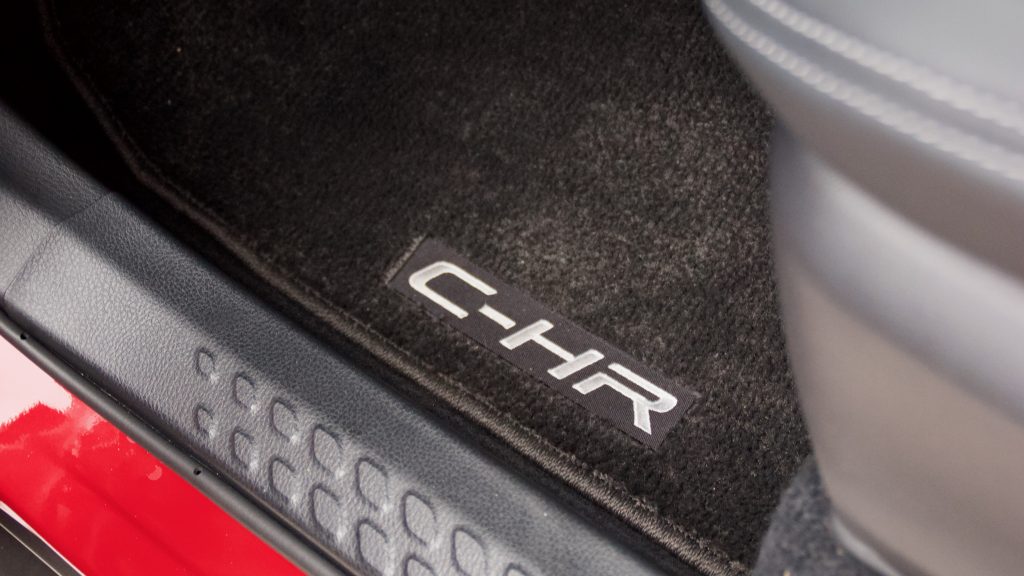
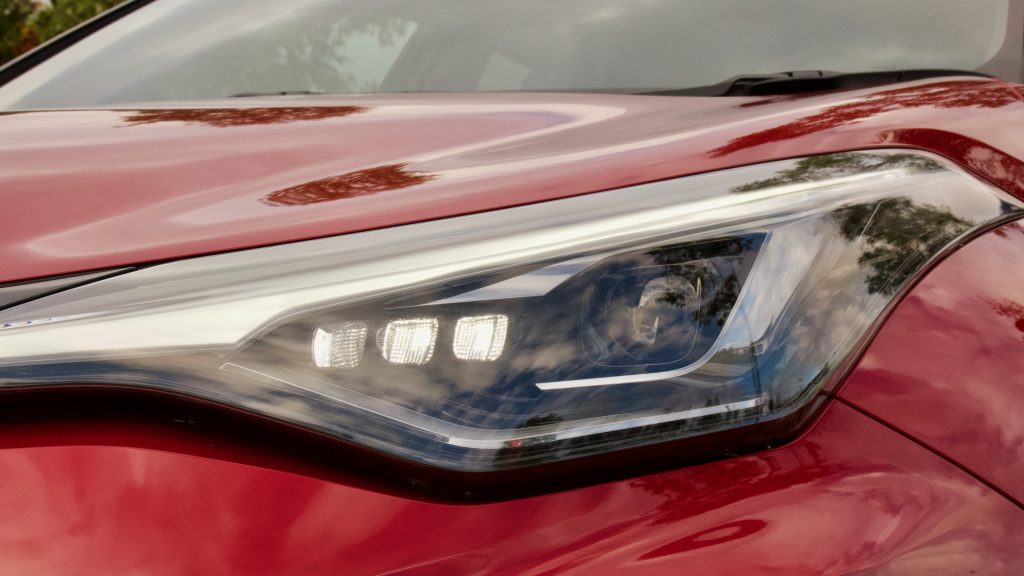
The only standard colour on the C-HR GR Sport is ‘Hornet Yellow’ with every other colour adding $500 to the price of the C-HR. These colours are ‘Ink Mica (Black)’, ‘Graphite’, ‘Crystal Pearl (Pearl White)’ and our test car’s ‘Feverish Red’. There is also the option to have a black roof on all colours bar ‘Ink’ and ‘Graphite’, which will set you back a further $850, although with ‘Hornet Yellow’ it only costs an additional $775.
Performance & Economy: 8.0/10
The 2021 Toyota C-HR GR Sport comes with only one engine option. It is Toyota’s familiar 1.8-litre four-cylinder paired to a hybrid drive system. The system has a combined total output of 90kW of power. When running on electric power the system produces 53kW of power and 163Nm of torque in addition to the petrol engine’s 72kW of power and 142Nm of torque. Drive is sent to the front wheels through a continuously variable transmission (CVT).
In Europe, the C-HR can be had with a 132kW 2.0-litre four cylinder hybrid powertrain. We think this engine would give the C-HR GR Sport the power and extra push it deserves for the GR Sport badge.
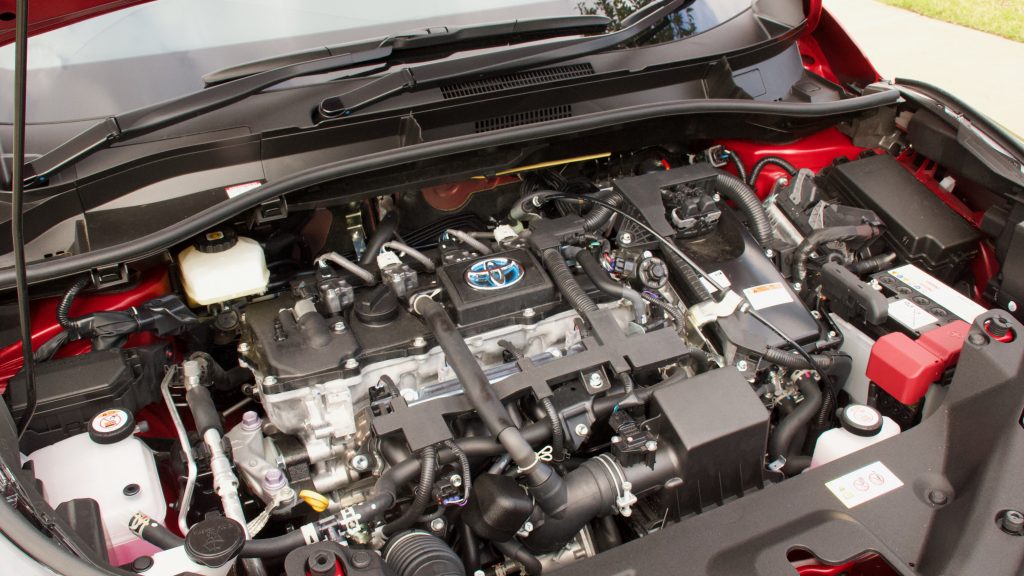
This may not sound like a lot of power and in reality it isn’t. The C-HR hybrid feels heavy on the road and lacks the urgency of the characterful 1.2-litre petrol engine offered in other variants. The hybrid system sees the most benefit around town and in the city where is can run mainly on electric power but can also venture out onto the open roads when necessary. While it can do this it really doesn’t like it, the engine seems to rev quite high when on a motorway and it feels unsettled. The 0-100km/h time of the C-HR Hybrid is a leisurely 11.0 seconds.
The CVT transmission does a good job of masking the lack of go around town meaning the revs are always minimal. The swap between electric power and petrol power is seamless and you barely even feel the transition. There is also an eco mode to try and optimise the battery power, there is also a power mode to use the combination of both electric and petrol power to optimise the power output.
Here is the 2021 Toyota C-HR GR Sport’s party piece: being a hybrid the fuel economy is class-leading. The claimed average fuel economy for the GR Sport is 4.3L/100km and in our week with the C-HR, we achieved an average fuel consumption of 4.8L/100km. This is great, especially considering even the most fuel efficient rival – the Juke – has a claimed average fuel consumption of 5.8L/100km.
Ride & Handling: 8/10
The ride on the C-HR GR Sport like a lot of other small SUV’s with large wheels – it can be fidgety around town, but it’s still a comfortable driving experience. By comparison, the Nissan Juke Ti with its 19-inch wheels has the same issue and they are both unsettled on rough roads. The ride on the open road does change slightly as it seems to calm down a little more and smooth out.
Another benefit of the hybrid system is that the batteries are located along the floor of the car, which lowers the centre of gravity and helps handling. Combine this with the new GR Sport-specific 19-inch wheels and that it rides on the new TNGA platform shared with the Corolla and RAV4, the C-HR can really handle its own when shown a corner in anger. Don’t let the SUV looks fool you, the C-HR actually handles remarkably well. The chassis is refined and well sorted.
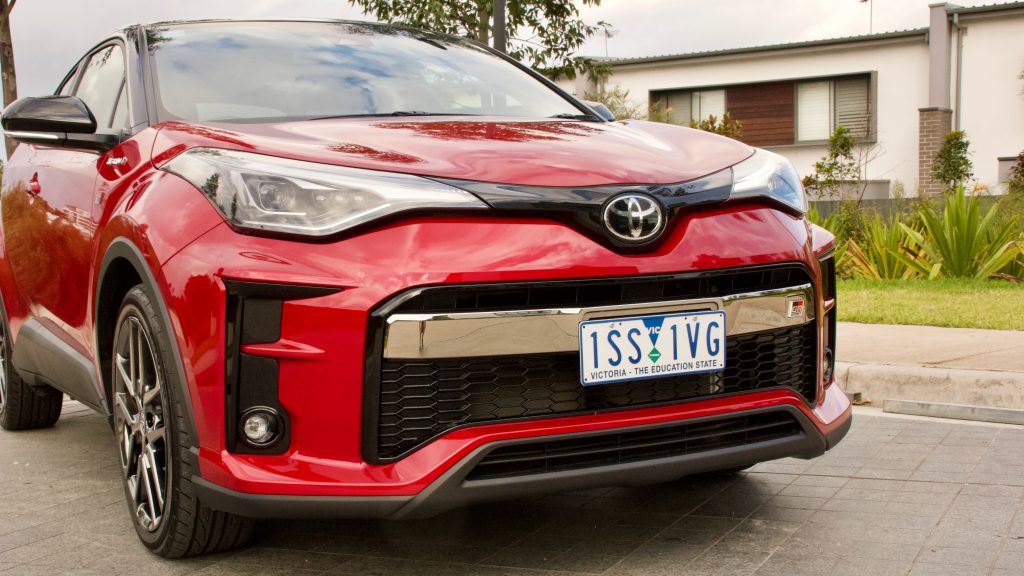
The active safety tech on the 2021 Toyota C-HR GR Sport is fantastic – the only gripe we have is the lane departure warning system, which can get a little irritating at slower speeds as it not only shows a little symbol on the dash but also makes a noise.
Interior & Practicality: 7.5/10
The interior of the 2021 Toyota C-HR GR Sport further shows the funky side of the small SUV. It has an unconventional but cool looking dashboard that seems to lift up the centre screen to make it closer to the eye level of the driver. This funky design also carries over to the headlining, which is dark grey with a leaf design over the front passengers.
Despite its age, the C-HR has one of the most modern interiors of any Toyota – it offers a contemporary design with a swooping dash and layered design. The quality of the interior is also quite good as there are a lot of soft touch materials in the cabin with the exception of the rear doors and top portion of the dash. Even the knobs to operate the climate control have a nice metal finish and quality feel. The seats are very comfortable and offer a great amount of support when cornering.
Centre of the 2021 Toyota C-HR GR Sports cabin is the familiar 8.0-inch touchscreen seen in other Toyota models such as the HiLux and Corolla. The quality of the screen could be better but the infotainment system itself is intuitive and easy to navigate. The navigation system is also easy to set, although it is easy to just connect Apple CarPlay or Android Auto and use the maps off your phone. The reversing camera could also use work as it is grainy and is hard to see at times.
The cabin storage is what we would call adequate. There is a small amount of storage in front of the gear knob to store a phone or wallet, small bins in each door, the small glovebox and the reasonable centre console, but that is it. Even the cupholders in the front of the cabin are separated with one in front and one behind the gear knob and there is no dedicated place to put your phone when it’s connected to the car through the poorly-located USB port.
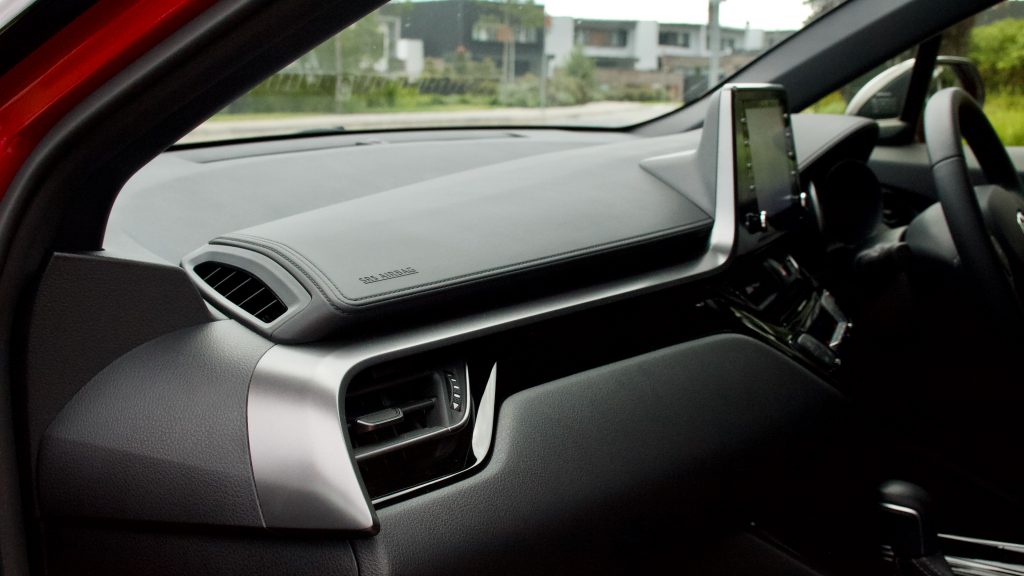
The rear seats in the C-HR aren’t the most spacious – the leg and head room can be used up by taller passengers. There is also a distinct lack of amenities with no centre armrest with cupholders, no rear air vents, no rear charging ports and the door line of the rear doors are quite high, meaning smaller kids may find it hard to look out the window. It’s a claustrophobic experience that makes the cabin feel smaller than it really is.
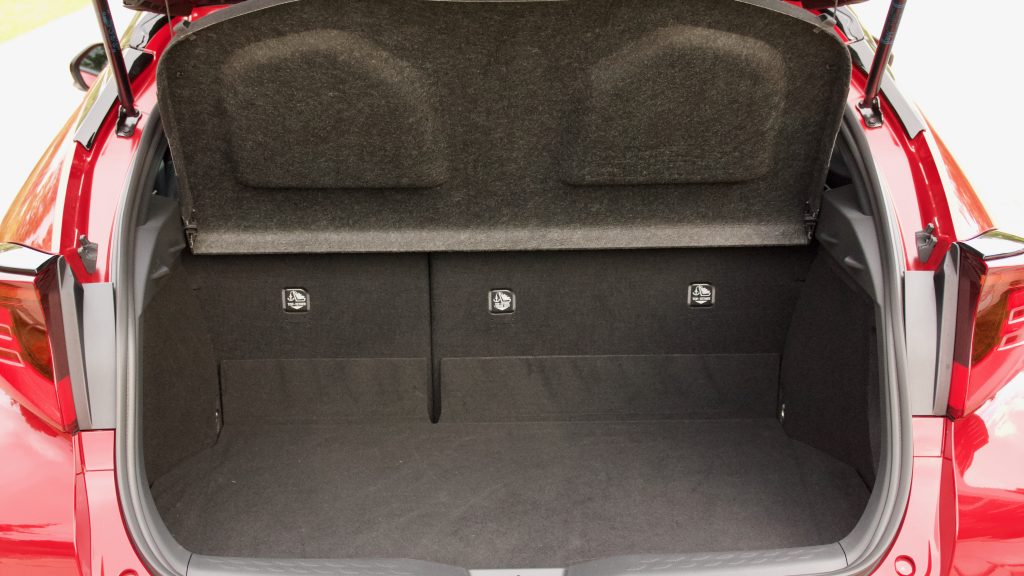
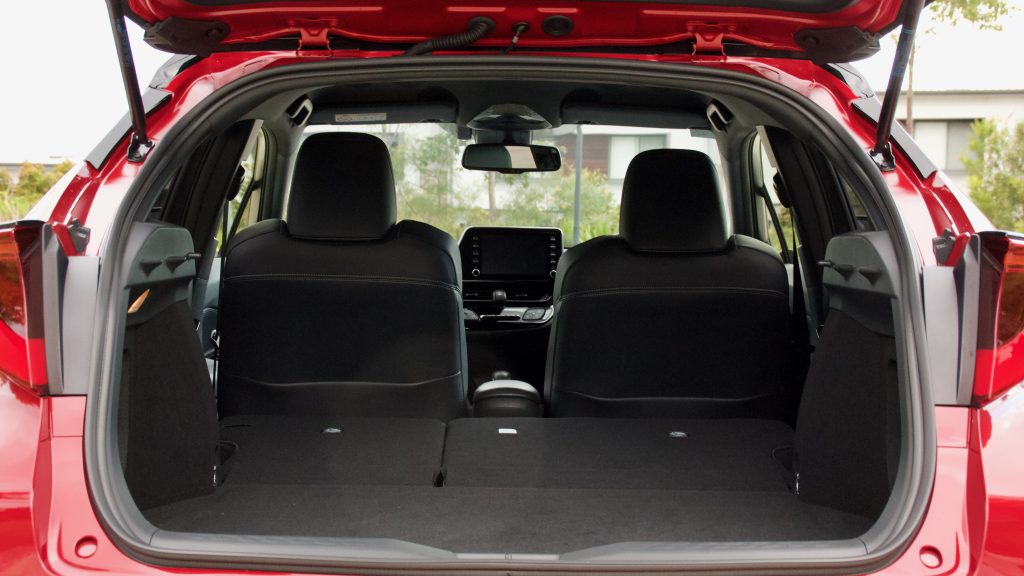
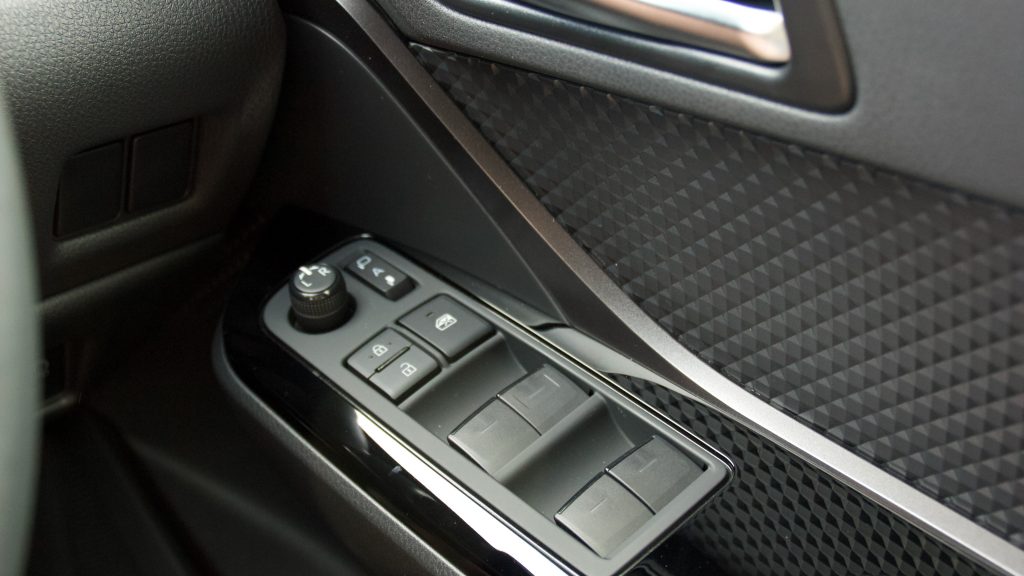
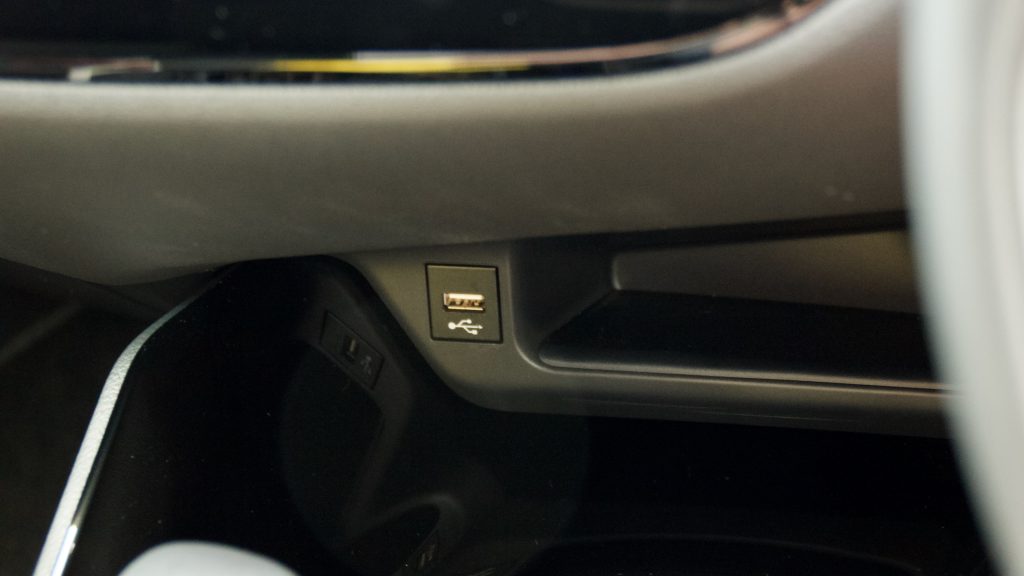
The boot of the 2021 Toyota C-HR offers up 318-litres of cargo space and in comparison, the Nissan Juke has 104-litres more at 422-litres. There is also no form of hooks or storage solutions back there either, which is annoying. Folding the seats down opens up around 1,100-litres of space, which isn’t huge. Under the floor is a space saver spare wheel.
Service & Warranty: 8.0/10
The 2021 Toyota C-HR comes with the brand’s five-year unlimited kilometre warranty, which is the same warranty offered by Nissan for the Juke – although the Nissan comes with five-years of roadside assist whereas the Toyota comes with one.
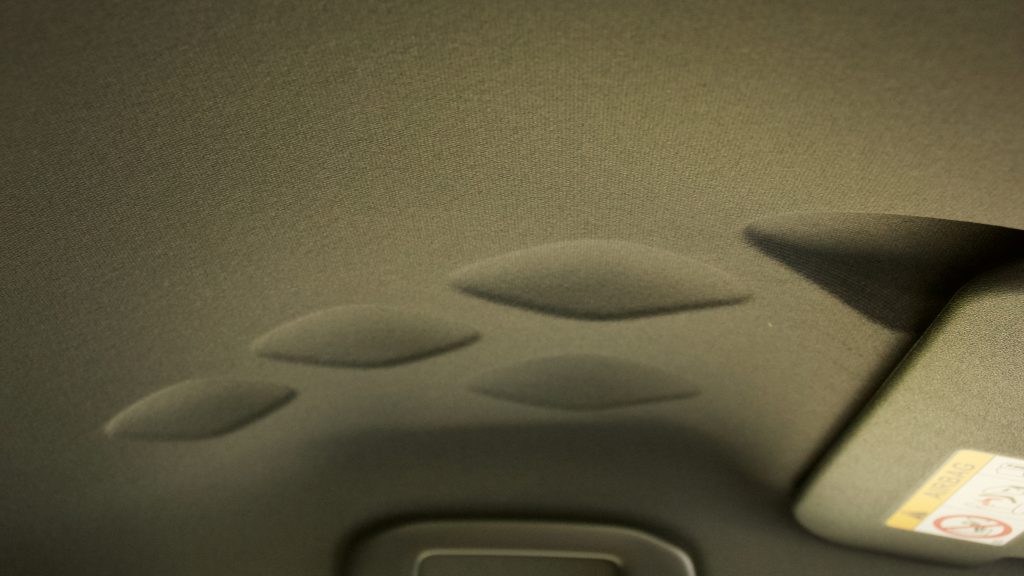
Servicing the Toyota C-HR comes around every 12-months or 15,000km, which is pretty on par with what is offered by other manufacturers – though the Nissan Juke only needs servicing every 12-months or 20,000km. The cost of servicing the C-HR over three years or 45,000km is $600, which is due to Toyota’s five-year capped price servicing. Every service for the first five years will set owners back just $200. Servicing a Juke over the same period of time will set owners back more than double that of the C-HR – a Juke will set you back $1,337 over three years or 60,000km.
2021 Toyota C-HR GR Sport DiscoverAuto Rating: 7.0/10
When Toyota revealed the C-HR in 2017, Australia loved it with nearly 6,500 sold in the first year and this love for the small SUV is still prevalent. With the addition of the GR Sport model, which brings a sportier flair to the C-GR range, customers have even more choice. While we wish the GR Sport variant got the 2.0-litre hybrid powertrain offered overseas, we still like the way the 1.8 drives.
The C-HR offers fantastic fuel economy in a contemporary SUV that looks the part, and it drives nicely as well. The new GR Sport hasn’t taken anything away from it, and it’s only added slightly better handling and a sportier look. We think it’s a very worthy addition to the C-HR range.
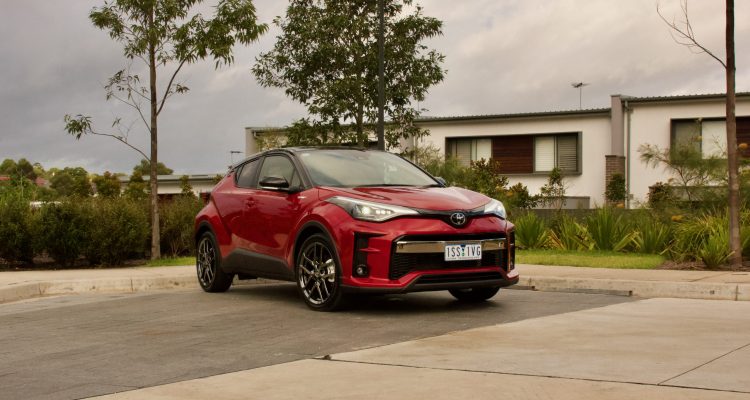
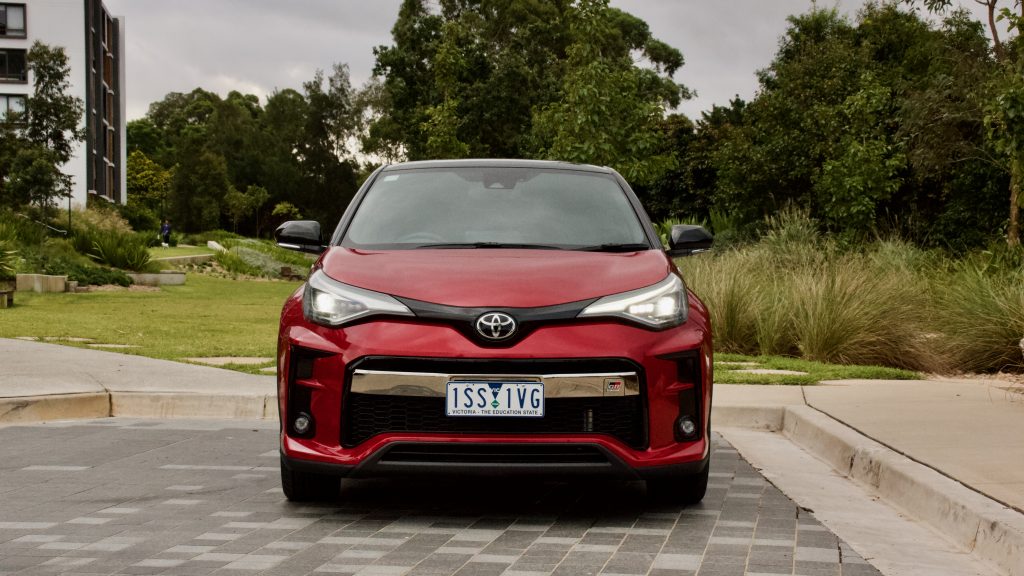
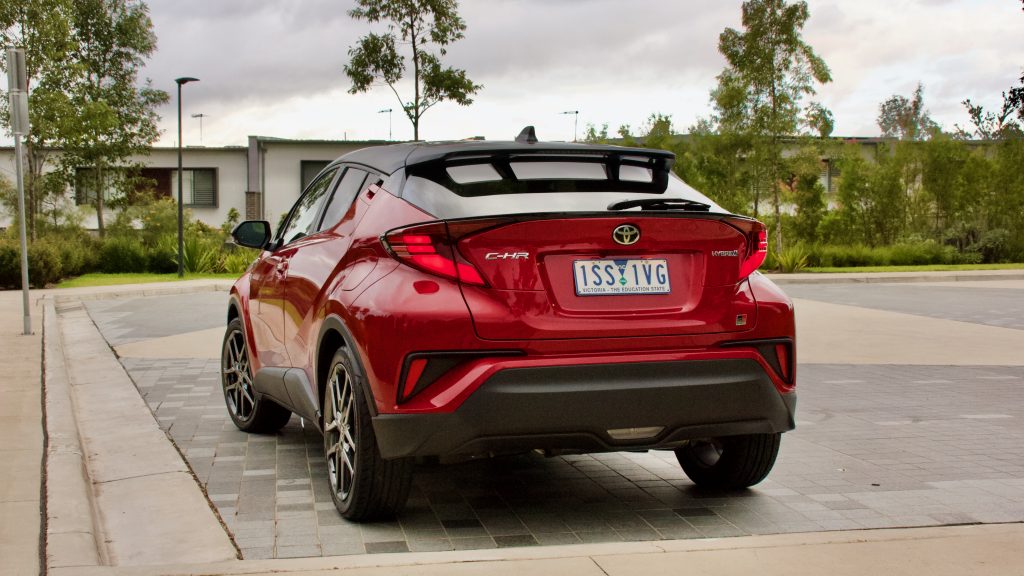
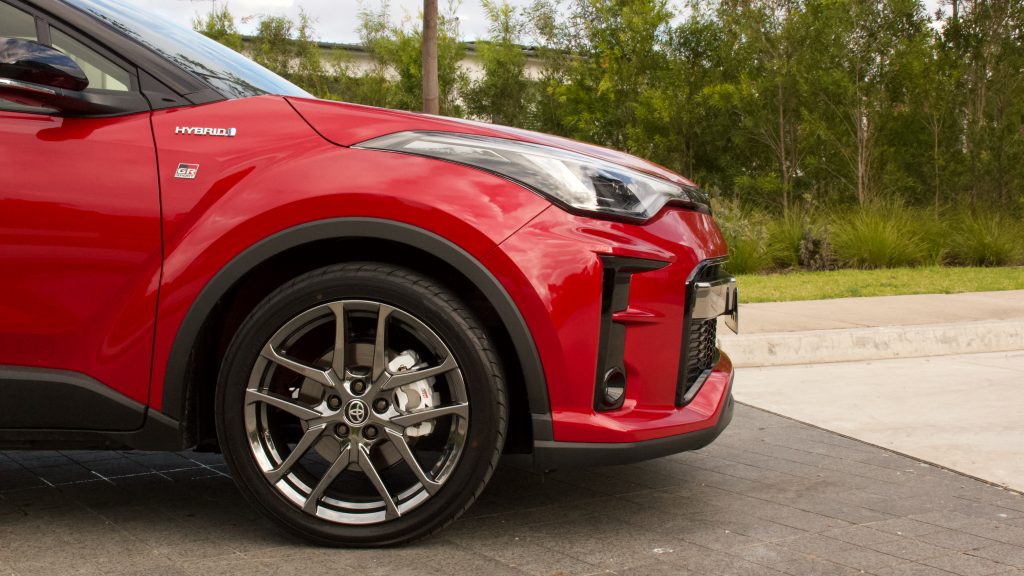
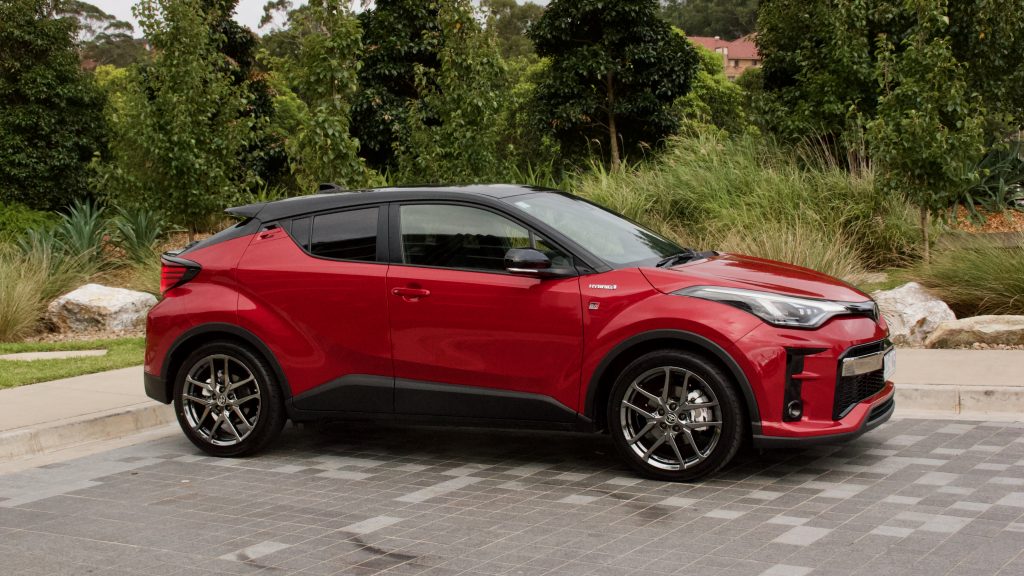
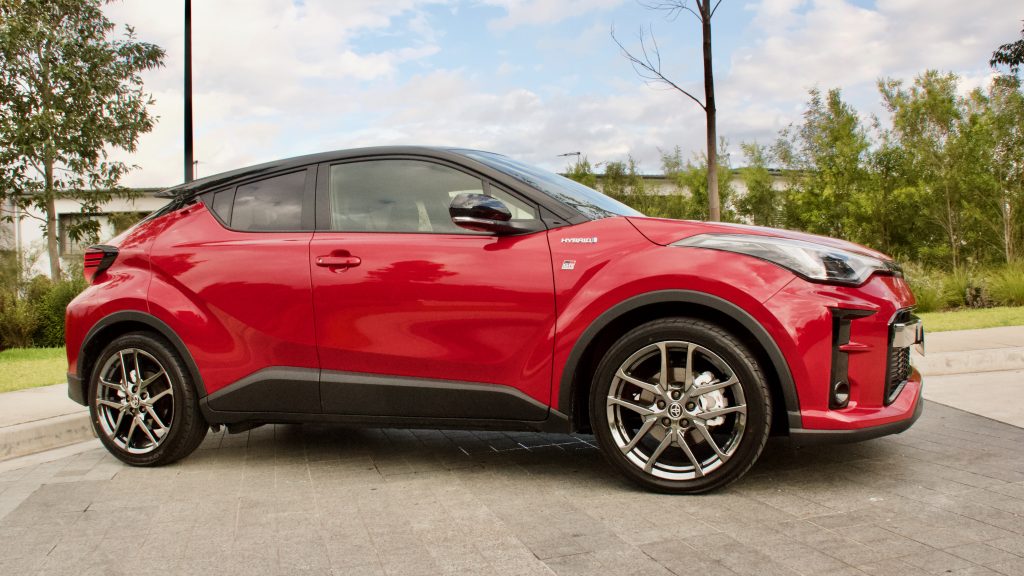
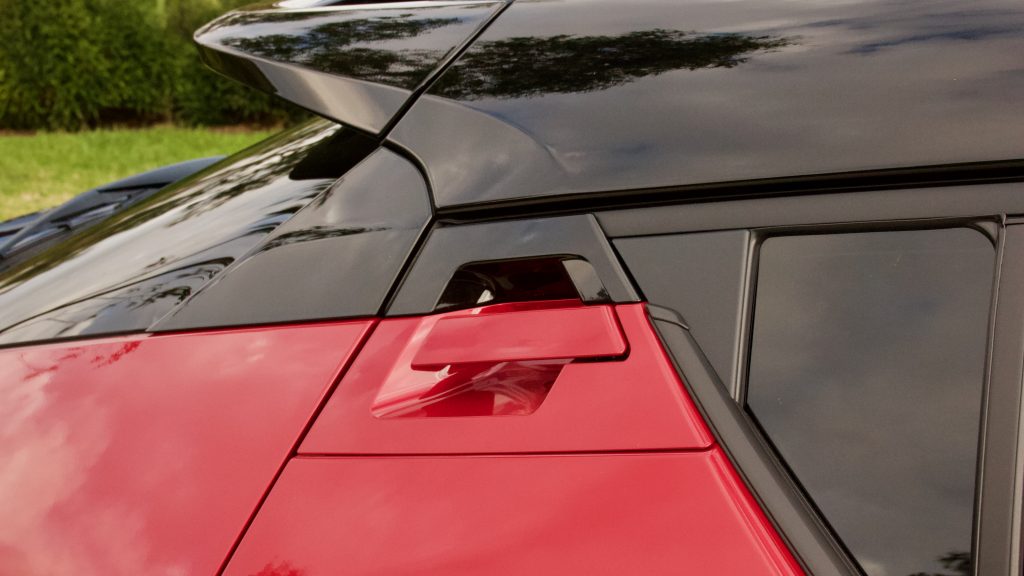
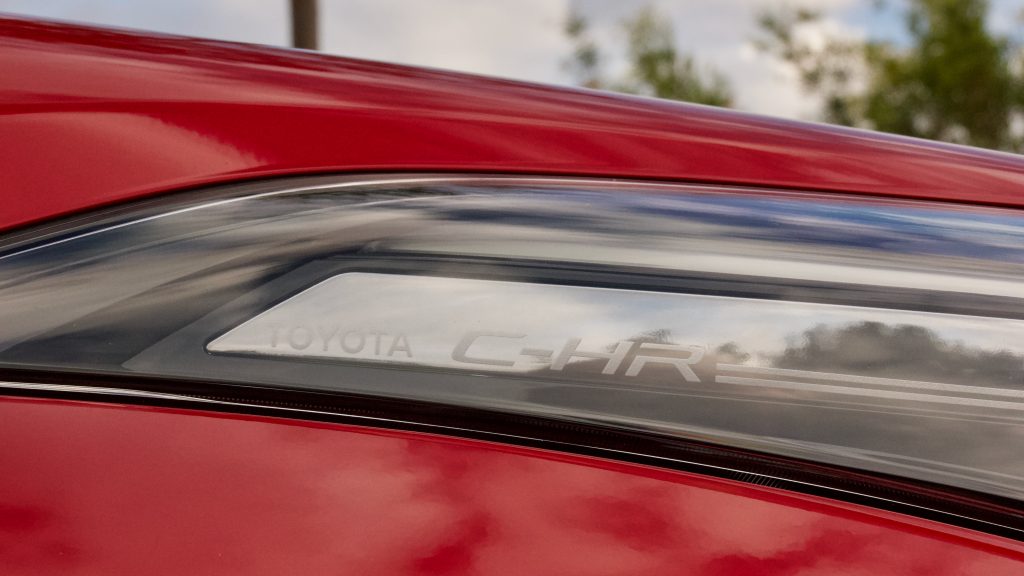
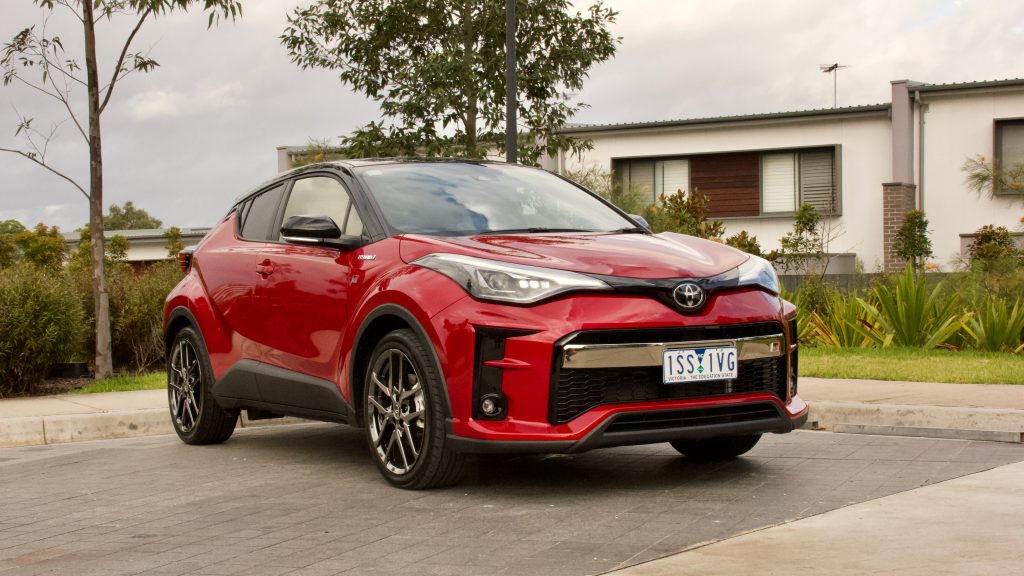
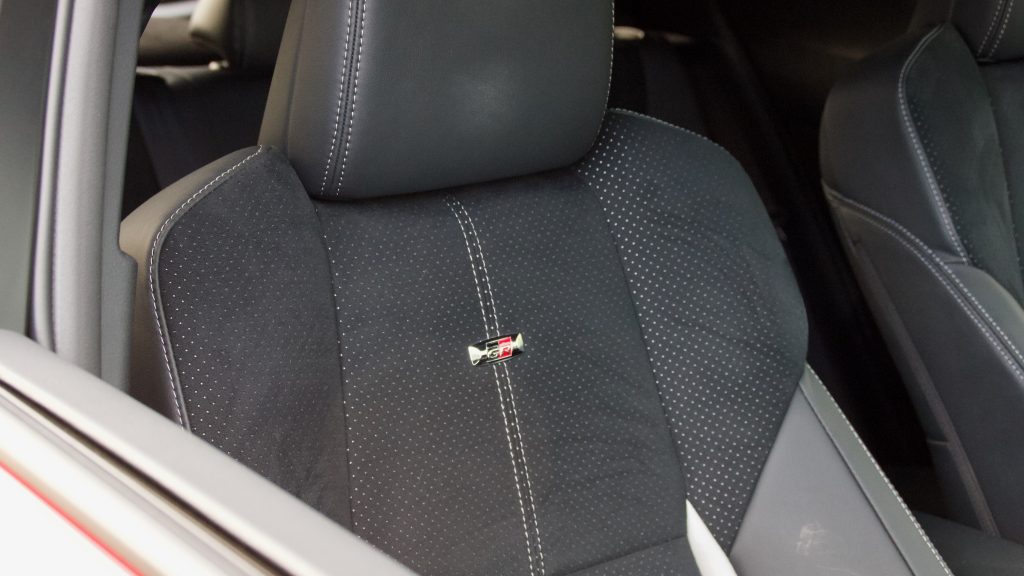
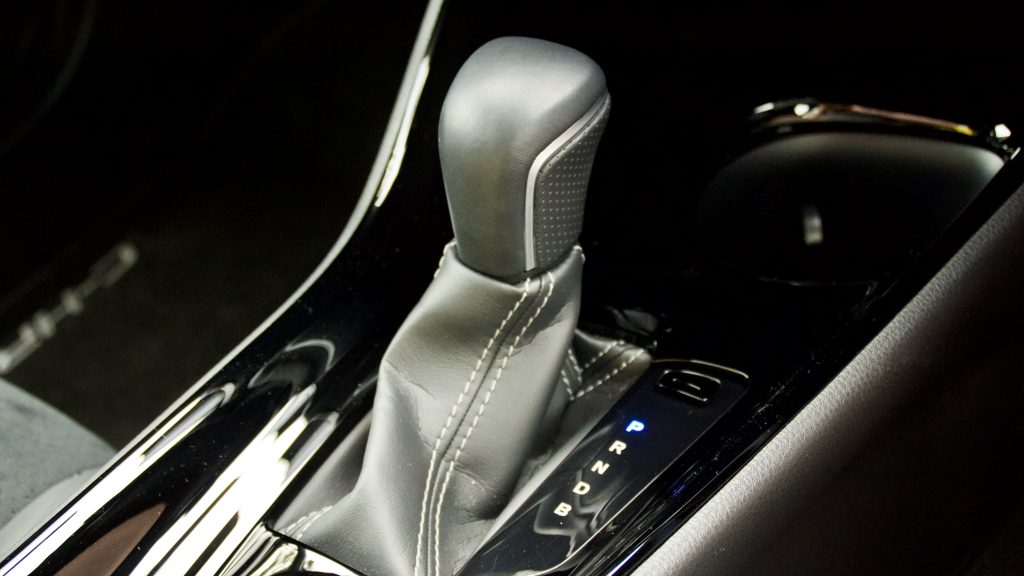
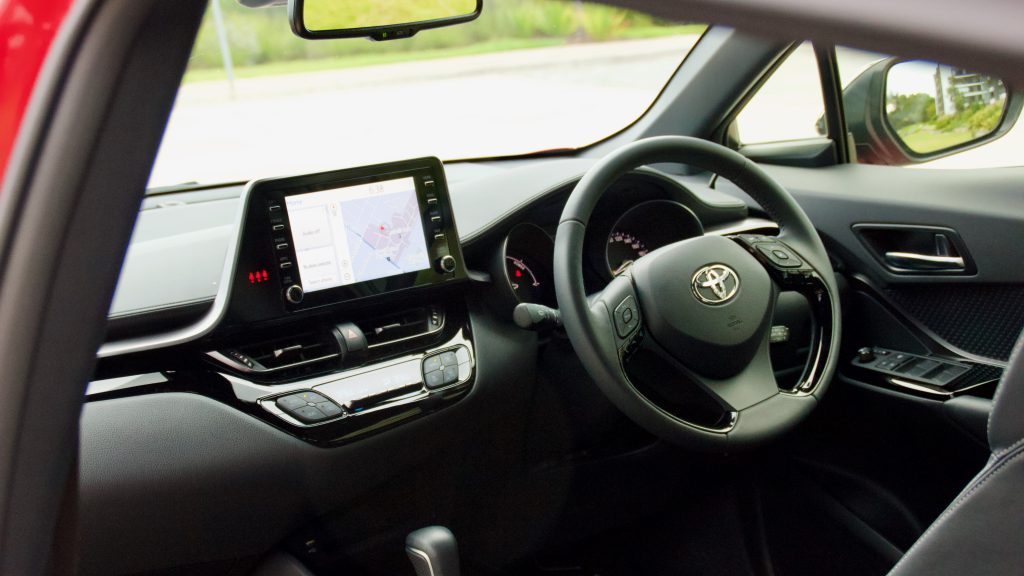
Love the looks of it. Reminds me of the R-8 seven bought in 1979. It was a great car.
????